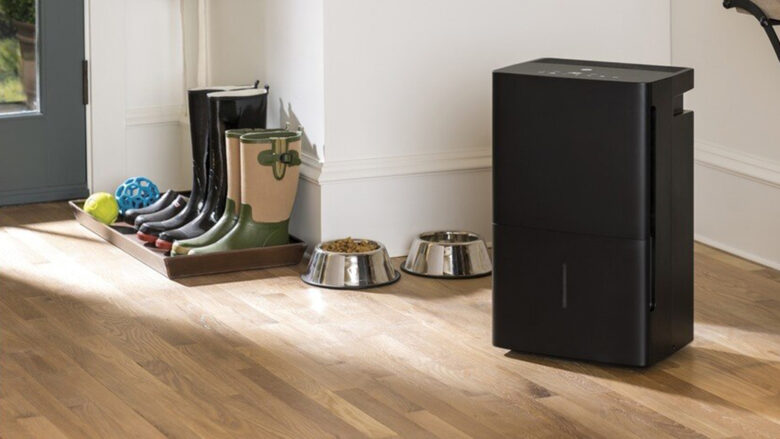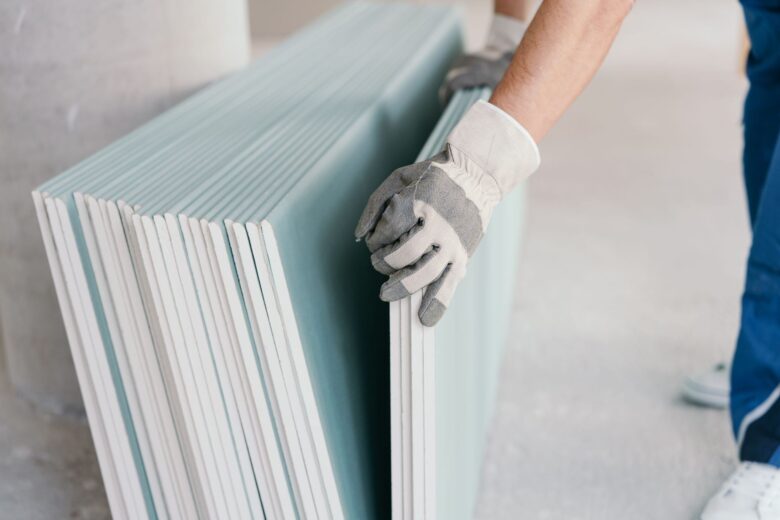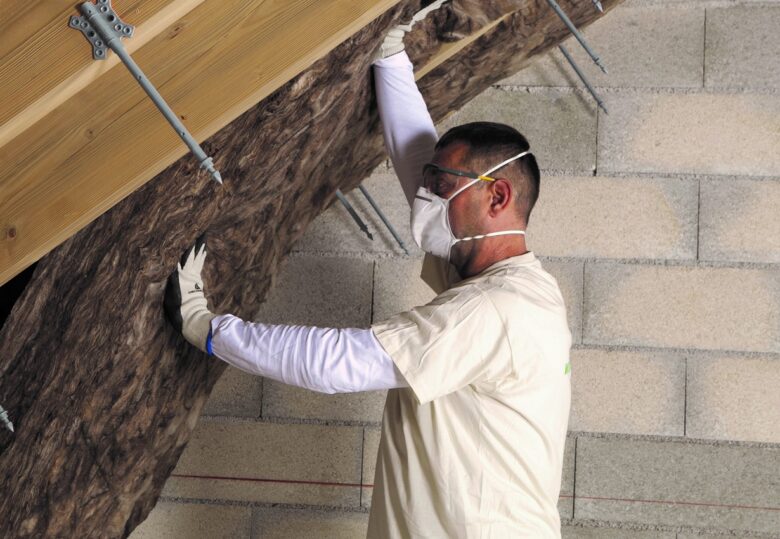Enclosed spaces such as basements, bathrooms, kitchens, and storage rooms can become damp havens for moisture. The problem is not just unpleasant but can lead to a plethora of concerns, including mold growth, structural damage, and potential health risks. As such, maintaining a healthy indoor atmosphere through effective moisture control methods is an imperative task for every homeowner or facility manager. This comprehensive guide delves into eight methods that can aid in creating a moisture-free environment in your enclosed spaces.
Contents
1. Proper Ventilation Techniques

Source: reichelt.com
At the heart of moisture control lies the concept of proper ventilation. This strategy relies on allowing fresh air to circulate throughout the space, effectively eliminating stale, moisture-laden air. A simple yet potent way to achieve this is by opening windows and doors regularly. Encouraging cross-ventilation will help disperse moisture and prevent it from settling on surfaces. However, do remember that the effectiveness of this method is weather-dependent. During high humidity conditions, it’s prudent to limit the usage of this method.
On the other hand, mechanical ventilation systems provide a more controlled solution. These devices regulate indoor air by expelling the damp air and replacing it with drier air from outside. Examples of such systems include exhaust fans and heat recovery ventilators. The latter even preheat the incoming cold air using the warmth of outgoing air, thus ensuring an energy-efficient process. Remember, the strategic placement of these devices can greatly enhance their efficiency.
2. Using Dehumidifiers

Source: tomsguide.com
Dehumidifiers are powerful tools designed specifically to extract moisture from the air. They function by drawing in moist air, removing the water content, and then blowing back the dried air into the room. Portable dehumidifiers are ideal for smaller spaces or rooms where issues are concentrated. Using them in areas like basements, laundry rooms, or bathrooms can drastically reduce the relative humidity levels, thereby curbing mold growth and other moisture-related problems.
For more extensive moisture problems, whole-house dehumidifiers can be an excellent choice. These are typically integrated with your existing HVAC system and work to control humidity levels throughout your entire home. It’s critical to size the dehumidifier correctly for optimal results. This means choosing a model that can handle the cubic footage of your space and can extract the required amount of water per day. Remember, overusing dehumidifiers can lead to overly dry conditions, causing discomfort and other issues.
3. Moisture-Resistant Building Materials

Source: ammeraalbeltech.com
When constructing or remodeling enclosed spaces, choosing moisture-resistant materials can go a long way toward preventing moisture-related issues. These materials can resist absorbing water, reducing the chance of mold growth and structural damage. For example, using concrete, metal, or plastic instead of wood in moisture-prone areas can mitigate potential problems. On the other hand, surfaces like drywall can be coated with water-resistant paint to boost their resistance to moisture.
Impervious flooring options, such as ceramic tiles or vinyl, are also excellent choices for areas susceptible to high moisture levels. They not only resist water absorption but also are easy to clean and maintain. Opting for moisture-resistant insulation, like closed-cell spray foam, can further aid in your fight against moisture. This type of insulation is not only resistant to water but also provides a higher R-value per inch, making it a superior option for both control and energy efficiency.
4. Effective Air Circulation Strategies

Source: luxedecor.com
Effective air circulation can help maintain a balanced humidity level in enclosed spaces. The primary step in this direction involves maintaining a comfortable indoor temperature, as warm air can hold more moisture than cold air. Therefore, using air conditioning during the warmer months can help manage indoor levels, as it cools and dries the air simultaneously.
Beyond temperature control, using fans to promote air movement is another practical strategy. Ceiling fans, box fans, and even HVAC system fans can help circulate the air, preventing it from becoming stagnant and allowing moisture to accumulate. It’s important to consider the direction of your fans – during warmer months, they should rotate counter-clockwise to push cool air down, while in colder months, a clockwise rotation helps distribute warm air evenly throughout the room.
5. Identifying and Fixing Leaks

Source: leaktracersdirect.co.uk
Leaks are a significant source of moisture intrusion in enclosed spaces. Hence, identifying potential leakage points and addressing them promptly is a critical moisture control step. Common culprits include roofs, windows, doors, and plumbing fixtures. Signs of a leak can vary, ranging from water stains, peeling paint, warped floors, or even an unexplained increase in your water bill.
Once identified, timely repair is crucial to prevent further damage. Simple leaks can often be managed with a sealant or caulking gun, but more complex leaks may require professional help. For instance, a leaking roof might need a comprehensive repair or even replacement. When addressing leaks, always make sure to dry out any wet materials to prevent secondary problems like mold growth.
6. Implementing Proper Insulation

Source: euractiv.com
A well-insulated space is your best bet against moisture intrusion. Insulation acts as a barrier, preventing warm, moist air from coming into contact with cool surfaces, thereby reducing condensation. Insulating your walls, ceilings, and floors can significantly help in maintaining a balanced indoor humidity level. Remember, the type of insulation material used and its correct installation plays a crucial role in its effectiveness.
Another critical area to consider is your pipes, especially those in cooler areas like basements or exterior walls. When warm, moist air comes into contact with cold pipes, it can lead to condensation, promoting mold growth and potentially causing structural damage. Therefore, insulating your pipes with foam pipe insulation can prevent these issues, protecting your enclosed spaces from unnecessary moisture.
7. Regular Maintenance and Inspection

Source: thezebra.com
Routine maintenance and inspections are key to keeping your spaces moisture-free. Regular checks for signs of dampness or mold can help nip any potential problems in the bud. This includes checking hard-to-reach places like attics, crawl spaces, and behind appliances where moisture might be hiding.
Beyond self-inspection, hiring professionals for an annual inspection can be beneficial. They can accurately assess your moisture control measures, spot early signs of trouble, and provide solutions. Regular HVAC system maintenance is also crucial as it ensures the system is effectively controlling indoor temperature and humidity, which plays a significant role in maintaining a moisture-free environment.
8. Condensation Prevention Methods
Condensation is a common cause of excess moisture in enclosed spaces. It occurs when warm air laden with moisture comes into contact with a cooler surface. Double-glazing windows, installing window film, or using thermal or heavy curtains can help reduce window condensation. Similarly, ensuring your appliances like dryers and stoves are adequately vented can prevent buildup.
Finally, maintaining an optimal indoor temperature can deter condensation. A sudden drop in temperature can cause the moisture in the air to condense quickly. Using thermostats to maintain a steady temperature can help manage this issue. Remember, the key is to strike a balance between heating your space and not letting it get too cold, to maintain a comfortable, moisture-free environment.
Final Words
The journey to achieving a moisture-free enclosed space is a combined effort of various strategies. From embracing proper ventilation techniques to using moisture-resistant building materials and implementing routine inspections, these methods are your arsenal in the battle against moisture. By understanding and implementing these effective moisture control measures, you can create a healthy, comfortable, and safe living or working space. Remember, an ounce of prevention is worth a pound of cure.
